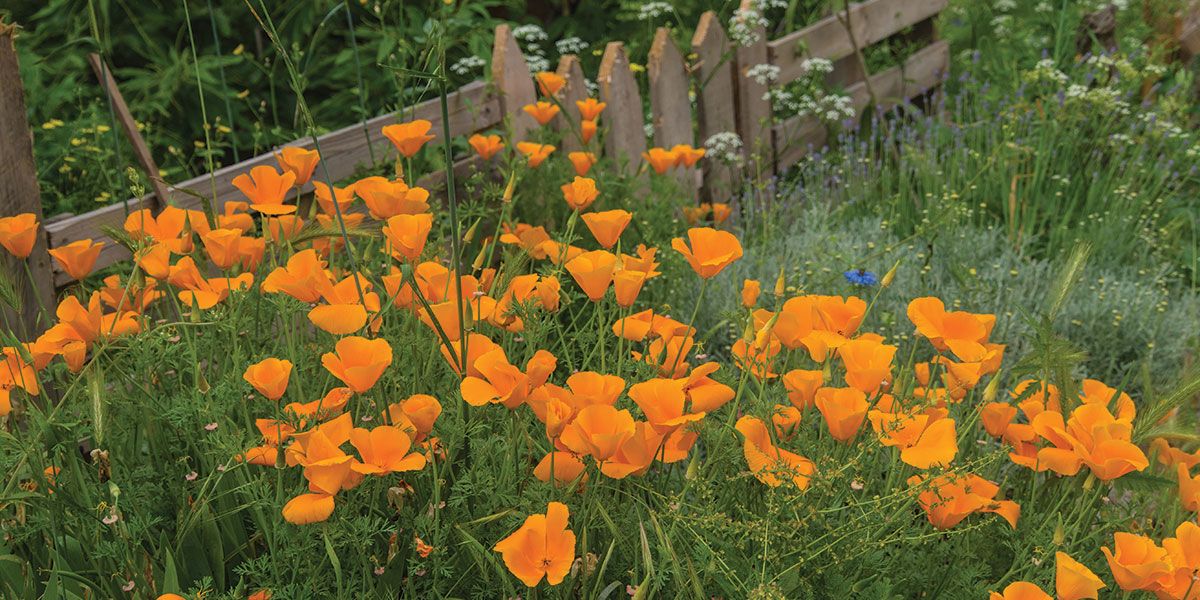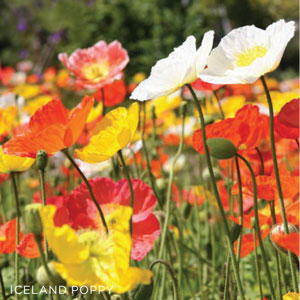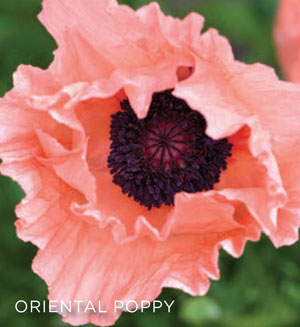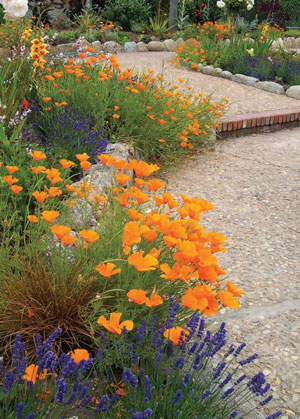Poppies on Display | Prepare Your Garden for Eye-Catching Color

As we finish out the short, dark days of winter, we may take comfort in the memory of our summer gardens. Now is the time to plan for those blooms that will carry us through the mild months of spring and into the long, hot summer months that many of us long for. You may work with residential or commercial landscaping experts to help you plan and build a beautiful and healthy garden. You may also get in touch with tree removal and tree trimming services to improve the look of your trees and landscape.
Adding a laurel hedge to your garden can truly transform its aesthetic. The lush greenery of the laurel leaves provides a vibrant backdrop to any garden setting, serving as a natural fence that adds privacy and beauty. With the high-quality laurel hedge plants available from Mill Farm Trees, your source for evergreen hedging, you can create a stunning garden display that will be the envy of your neighbors.
This year, think about planting poppies. This new addition will not only add brilliant color, but will attract pollinators and add to the overall well-being of our environment. The red poppy has long been a symbol of remembrance, peace and hope. They bloomed on desolate and depleted battlefields, and thus became a symbol of a soldier’s ultimate sacrifice. While the red poppy may be the most widely known, there are many other varieties to add depth and dimension to your garden.
Pick your poppy
It may seem daunting to add a new, unknown flower to your garden but don’t worry, the poppy is a perfect choice for novice gardeners as well as those with years of experience. The key to successful growing lies in choosing the right variety for your soil type and climate, and also following a few specific planting guidelines.
 • ICELAND POPPIES: This variety is not from Iceland, but from areas in Europe, Asia and North America. They do best in cooler climates, generally USDA zones 3-7, and will not thrive if nighttime temperatures reach above 70 degrees before the month of July. Iceland poppies prefer mildly acidic soil and will bloom from March to May. They will grow 18 inches wide on 3-foot-tall stalks, and they come in a multitude of colors from white to orange. Popular varieties include the Champagne Bubble series, Sherbet Mix and Colibri.
• ICELAND POPPIES: This variety is not from Iceland, but from areas in Europe, Asia and North America. They do best in cooler climates, generally USDA zones 3-7, and will not thrive if nighttime temperatures reach above 70 degrees before the month of July. Iceland poppies prefer mildly acidic soil and will bloom from March to May. They will grow 18 inches wide on 3-foot-tall stalks, and they come in a multitude of colors from white to orange. Popular varieties include the Champagne Bubble series, Sherbet Mix and Colibri.
 • RED POPPIES: Red poppies, also known as Flanders, Corn, Field and Shirley poppies, hail originally from Mesopotamia (modern day Iraq). Although the classic red is associated with these poppies, newer colors include mauve, merlot, lavender and blush. Red poppies grow best in USDA zones 4-7 and prefer a neutral soil. They will grow 18 inches wide on 2-4 foot stalks and will bloom from April to June, or later if temperatures stay cooler. Popular varieties include American Legion, Mother of Pearl, Angel’s Choir, Amazing Grey and Pandora.
• RED POPPIES: Red poppies, also known as Flanders, Corn, Field and Shirley poppies, hail originally from Mesopotamia (modern day Iraq). Although the classic red is associated with these poppies, newer colors include mauve, merlot, lavender and blush. Red poppies grow best in USDA zones 4-7 and prefer a neutral soil. They will grow 18 inches wide on 2-4 foot stalks and will bloom from April to June, or later if temperatures stay cooler. Popular varieties include American Legion, Mother of Pearl, Angel’s Choir, Amazing Grey and Pandora.
 • CALIFORNIA POPPIES: This delicate variety is known for its golden color and its ability to survive in temperatures up to 90 degrees. Although they like the heat, they prefer dry heat to a humid climate. The California poppy is native to North America, found in places such as Mexico, California and the Desert Southwest. They are a low-profile flower, spreading only 12 inches wide on 2-18 inch stalks. California poppies grow well in USDA zones 3-10, aren’t particular about their soil, and will bloom in late spring. Popular varieties include California Golden, Thai Silk and Strawberry Fields.
• CALIFORNIA POPPIES: This delicate variety is known for its golden color and its ability to survive in temperatures up to 90 degrees. Although they like the heat, they prefer dry heat to a humid climate. The California poppy is native to North America, found in places such as Mexico, California and the Desert Southwest. They are a low-profile flower, spreading only 12 inches wide on 2-18 inch stalks. California poppies grow well in USDA zones 3-10, aren’t particular about their soil, and will bloom in late spring. Popular varieties include California Golden, Thai Silk and Strawberry Fields.
 • ORIENTAL POPPIES: Originally from Persia (modern day Iran and Turkey), these poppies display brilliant colors of orange, red, plum, salmon and white, with a telltale black pattern on their innermost petals. These poppies prefer cooler temperatures and will grow best in USDA zones 3-8. Neutral soil is best for oriental poppies, which will bloom in late spring to early summer. They will grow up to 2 feet in width on 12-18 inch stalks. Popular varieties include Helen Elizabeth, Royal Wedding, Harlem and Brilliant.
• ORIENTAL POPPIES: Originally from Persia (modern day Iran and Turkey), these poppies display brilliant colors of orange, red, plum, salmon and white, with a telltale black pattern on their innermost petals. These poppies prefer cooler temperatures and will grow best in USDA zones 3-8. Neutral soil is best for oriental poppies, which will bloom in late spring to early summer. They will grow up to 2 feet in width on 12-18 inch stalks. Popular varieties include Helen Elizabeth, Royal Wedding, Harlem and Brilliant.
 • WOODLAND POPPIES: The Woodland poppy, or Celandine poppy, displays a vibrant orange/yellow color and is native to Eastern North America. These poppies are ideal for partial shade and a close proximity to streams and ponds. They prefer a moist, slightly acidic soil and will even grow well in clay. They will grow 18 inches wide on 12-18 inch stalks. It is a hardy plant that adapts well to most gardens.
• WOODLAND POPPIES: The Woodland poppy, or Celandine poppy, displays a vibrant orange/yellow color and is native to Eastern North America. These poppies are ideal for partial shade and a close proximity to streams and ponds. They prefer a moist, slightly acidic soil and will even grow well in clay. They will grow 18 inches wide on 12-18 inch stalks. It is a hardy plant that adapts well to most gardens.
 Pointers for planting
Pointers for planting
• Plant in spring, a few weeks before the last frost. Don’t plant poppies indoors and transfer them outside since their roots are extremely sensitive. Poppies grow best from seed and need plenty of sunlight to germinate. Gently sprinkle your poppy seeds on top of the soil in your garden and water lightly. Mix your seeds with a bit of sand so you can see if they are evenly spaced when you plant them.
• Cover the seeds with a sheet, burlap or netting, as birds will enjoy them as a snack.
• Add compost or leaf mold — the addition of phosphorous to your soil will produce more abundant blooms.
• Choose a spot in your garden that gets at least six hours of sunlight per day.
• Poppies do not like overcrowding. After they have grown about 2 inches tall, thin them back so there are roughly 8 inches between plants, to avoid competition. They will tolerate drought, but plan on watering at least once a week.
• Make sure the beds are free from weeds, and since poppies can be fragile and damaged from heavy rain and spring storms, plant them near other shrubs or even a wall for added protection.
The best part about poppies besides their dazzling colors? The flowers will die back and produce seed pods that will mature and pepper your garden in the summer and allow for another beautiful array of flowers the following spring. ✦
California Poppies, Iceland Poppies, Oriental Poppies, pollinators, Poppies, Red Poppies, Woodland Poppy






